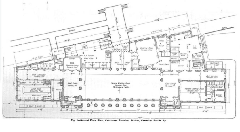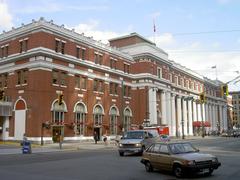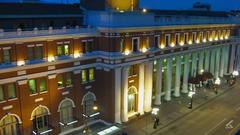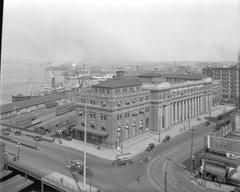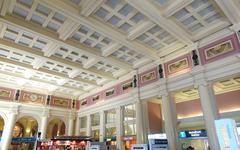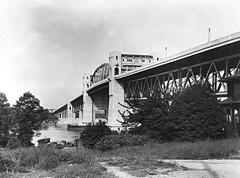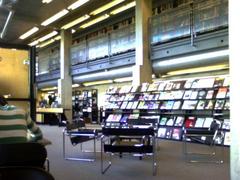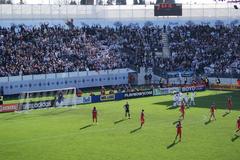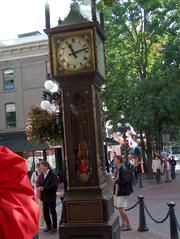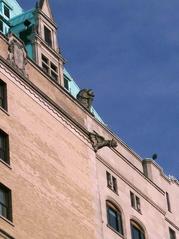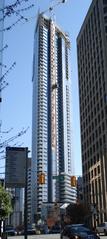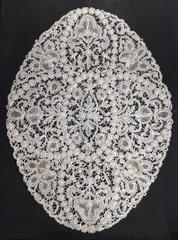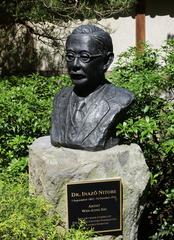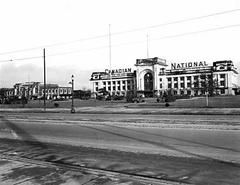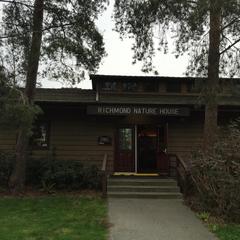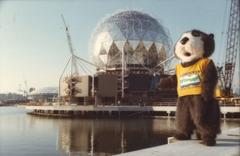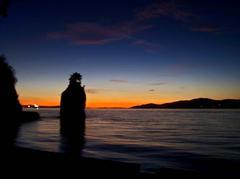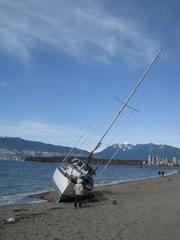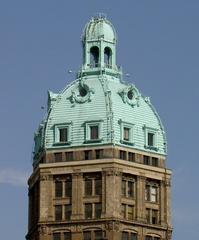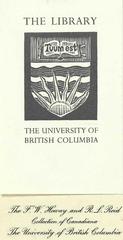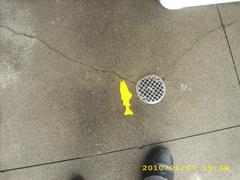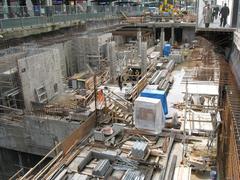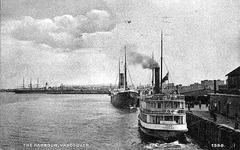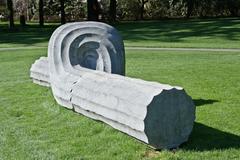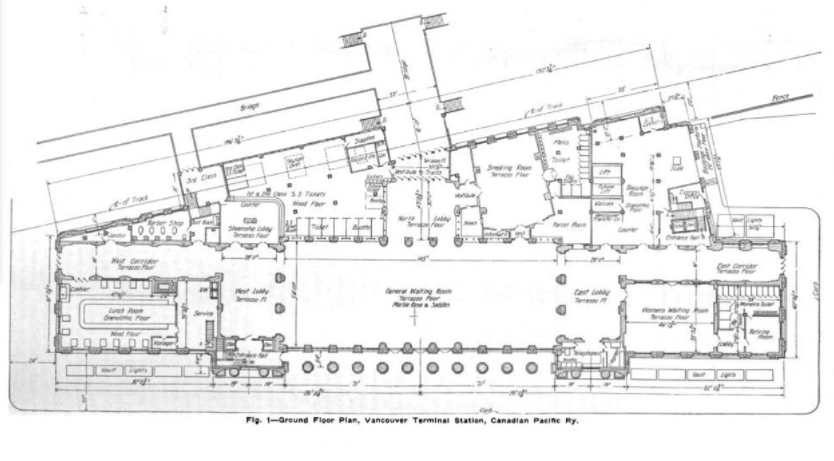
Waterfront Station Vancouver: Visiting Hours, Tickets & Historical Sites Guide
Date: 14/06/2025
Waterfront Station in Vancouver is more than a transit hub—it’s a living piece of the city’s history, a striking architectural landmark, and the most important gateway to downtown and the region. This comprehensive guide covers everything you need to know about visiting hours, ticketing, transit connections, accessibility, amenities, and nearby attractions, ensuring a smooth and enriching experience for every visitor (Historic Places Days; TransLink Official Site; TourbyTransit).
Table of Contents
- Introduction & Historical Significance
- Architecture & Heritage
- Evolution as a Transit Hub
- Location & Station Layout
- Transit Services & Connectivity
- Visiting Hours & Ticket Information
- Accessibility Features
- Visitor Amenities & Safety
- Nearby Attractions & Walking Routes
- Practical Tips for Visitors
- FAQs
- Visuals & Media
- Conclusion
- References
Introduction & Historical Significance
Waterfront Station, located at 601 West Cordova Street in downtown Vancouver, is a cornerstone of the city’s transportation network and a celebrated historic site. Opened in 1914 by the Canadian Pacific Railway, the station was originally the western terminus for transcontinental passenger trains (Wikiwand). Over the decades, it has evolved into Metro Vancouver’s main intermodal hub, linking SkyTrain, SeaBus, West Coast Express commuter rail, and bus services.
The site is situated on the unceded territories of the Musqueam, Squamish, and Tsleil-Waututh Nations, whose stewardship predates colonial development by millennia (Historic Places Days). The station’s enduring presence is a testament to Vancouver’s aspirations and growth throughout the 20th and 21st centuries.
Architecture & Heritage
Designed by Montreal architects Barott, Blackader & Webster, Waterfront Station is a prime example of neoclassical architecture. The symmetrical red-brick façade is adorned with smooth white Ionic columns, while the grand interior hall features large clocks and murals by Adelaide Langford depicting Canadian landscapes (A View on Cities; Vancurious). Notable heritage elements include:
- Angel of Victory: A bronze statue by Coeur de Lion McCarthy honoring CPR employees lost in World Wars.
- Mosaic Floors & Ornate Ceiling: Historic details preserved through major restoration projects, such as the 2015 brick façade restoration.
The building is protected under Vancouver’s Heritage Conservation program, ensuring the preservation of its historical and architectural integrity (Historic Places Days).
Evolution as a Transit Hub
- Early Years (1914–1970s): Served as the main passenger rail terminal for the CPR, catalyzing Vancouver’s economic and urban growth.
- Transition to Intermodal Hub (1970s–1990s): With long-distance trains moving to Pacific Central Station, Waterfront Station was reimagined as a multi-modal facility, adding SeaBus service in 1977 and SkyTrain’s Expo Line in the 1980s (Wikiwand).
- Modern Era: The station now anchors all three SkyTrain lines, SeaBus, West Coast Express, and multiple bus routes, making it the region’s busiest and most versatile transit interchange.
Ongoing upgrades have improved accessibility, passenger flow, and amenities, including a new customer service center and escalators.
Location & Station Layout
Waterfront Station’s central location places it within easy reach of Gastown, Canada Place, the Convention Centre, and the Seawall. Entrances are located on West Cordova Street (main entrance), Howe Street (Expo Line), and Granville Street (Canada Line).
- Main Hall: Historic railway building with grand columns and murals.
- Granville Entrance: Direct access to the Canada Line, ideal for early-morning travelers.
- Howe Street Access: Expo Line connection.
- Overhead Walkway: Connects the main building to the SeaBus terminal.
Maps and signage throughout the station support easy navigation (TourbyTransit; SkyTrain Map).
Transit Services & Connectivity
Waterfront Station is the northern terminus for:
- SkyTrain Expo Line: To Burnaby, New Westminster, and Surrey.
- Canada Line: To Richmond and YVR Airport.
- SeaBus: 12-minute ferry to Lonsdale Quay, North Vancouver.
- West Coast Express: Commuter rail to Port Moody, Coquitlam, and Mission.
- Bus Services: Local and regional routes, including R5 RapidBus.
Real-time schedule displays and a dedicated Compass Customer Service Centre are available for passenger assistance (TransLink Official Site).
Visiting Hours & Ticket Information
- Station Hours: Open daily from approx. 5:00 a.m. to 1:30 a.m., aligning with transit schedules. The Granville entrance opens earlier for Canada Line access.
- Tickets & Fares:
- Compass Card: Recommended for seamless travel across all TransLink modes; available at vending machines and the Compass Centre.
- Single-Use Tickets: For occasional travel, available at station machines.
- DayPass: Unlimited travel for one day; ideal for tourists.
- Fares: Zone-based; check the TransLink Fare Guide for details.
Always tap your Compass Card or ticket when entering and exiting transit gates.
Accessibility Features
Waterfront Station is fully accessible:
- Elevators and Escalators: Access to all platforms, with recent escalator replacements and additions.
- Tactile Paving & Audible Announcements: For visually impaired travelers.
- Accessible Washrooms: Located inside the main concourse.
- Service Animal Friendly: All transit modes and station areas.
Recent renovations have further improved accessibility on platforms and concourses (Wikiwand).
Visitor Amenities & Safety
- Dining & Retail: Cafés, quick-service restaurants, and convenience stores are found in and around the station.
- Restrooms & Seating: Public washrooms and ample seating in the main hall.
- Wi-Fi: Free Wi-Fi is available throughout the station.
- Security: CCTV monitoring, transit police, and emergency phones ensure a safe environment.
- Luggage Storage: No official luggage storage inside the station; check nearby hotels for short-term options.
Nearby Attractions & Walking Routes
Waterfront Station is steps away from some of Vancouver’s most iconic destinations:
- Gastown: Historic district with the famous Steam Clock, boutiques, and restaurants.
- Canada Place: Cruise terminal, convention center, and FlyOver Canada attraction.
- Stanley Park & Seawall: Accessible by a scenic waterfront walk or short bike ride.
- Chinatown: Home to the Dr. Sun Yat-Sen Classical Chinese Garden and cultural sites.
- Harbour Centre: Panoramic city views from the Lookout.
During summer, the area comes alive with festivals, outdoor markets, and street performances (YWCAVan; PlanetWare; Vancouver Planner).
Practical Tips for Visitors
- Peak Hours: Weekdays 7–9 a.m. and 4–6 p.m. are the busiest.
- Tickets: Use a Compass Card for convenience and savings.
- Transfers: Allow extra time to navigate between platforms, especially during peak periods or cruise ship arrivals.
- Luggage: Travel light, as no storage is available on-site.
- Weather: Vancouver is rainy from October to March; bring an umbrella or rain jacket.
- Bicycles: Permitted on SkyTrain and SeaBus during off-peak hours (TransLink Official Site).
- Wayfinding: Follow clear signage and digital displays for guidance.
- Safety: Area is generally safe, but standard city precautions are advised, especially at night.
Frequently Asked Questions (FAQ)
Q: What are Waterfront Station’s visiting hours?
A: Open daily from approximately 5:00 a.m. to 1:30 a.m.
Q: Where can I buy tickets?
A: At Compass vending machines, the Compass Customer Service Centre, or online.
Q: Is the station accessible?
A: Yes, it features elevators, ramps, tactile paving, audible announcements, and accessible washrooms.
Q: Are there luggage storage facilities?
A: No dedicated storage on-site; check nearby hotels or private services.
Q: Can I bring my bicycle?
A: Bicycles are permitted during off-peak hours on SkyTrain and SeaBus.
Q: Is the area safe at night?
A: Yes, but use typical urban safety precautions.
Visuals & Media
- Imagery: The station’s neoclassical façade, grand interior, murals, and Angel of Victory statue are standout photo opportunities.
- Virtual Tours & Maps: Available on the Tourism Vancouver website.
Conclusion
Waterfront Station stands as a symbol of Vancouver’s historical evolution, urban connectivity, and architectural heritage. Its central location, comprehensive transit services, and proximity to major attractions make it indispensable for both travelers and locals. Whether you’re drawn by its history, architecture, or convenience, a visit to Waterfront Station is essential to experiencing the heart of Vancouver.
For real-time updates, route planning, and ticket purchases, visit the official TransLink website and consider downloading the Audiala app for personalized travel support.
References
- Historic Places Days
- TransLink Official Site
- TourbyTransit
- Tourism Vancouver
- Wikiwand
- A View on Cities
- YWCAVan
- PlanetWare
- Vancouver Planner
- Fairmont Waterfront
- SkyTrain Map
- Vancurious
Ready to explore Vancouver seamlessly? Download the Audiala mobile app for real-time transit updates, ticket purchases, and personalized travel tips. Stay connected with us on social media and check out our related posts for more insider insights!
